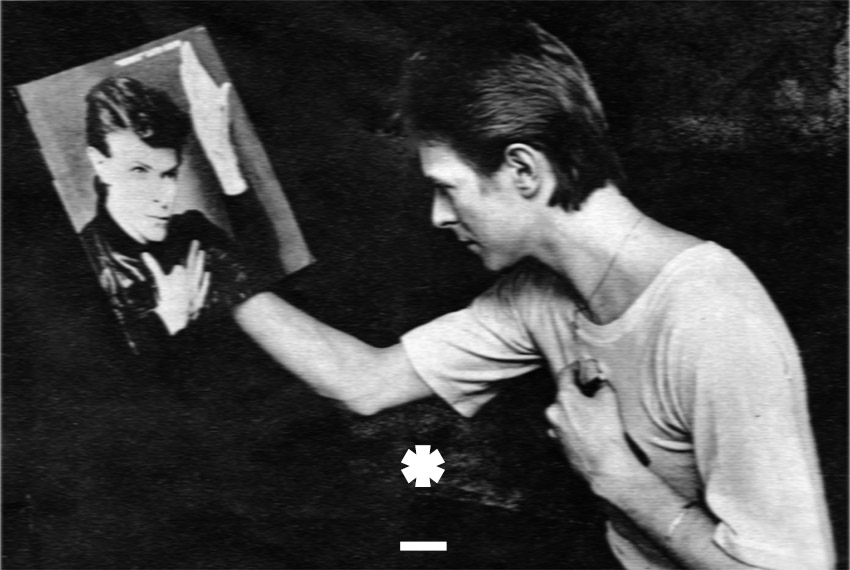2000-2016: Heathen
“I’m pretty much a realist. There’s a certain age you get to when you’re not really going to be shown [on TV] anymore. The young have to kill the old…That’s how life works…It’s how culture works.” – David Bowie, as told to Entertainment Weekly
It’s fitting that in this new century, when many thought the likelihood of this happening was unimaginable, it occurred in 2003. Faithful Bowie completists probably caught on this before everyone else did, but looking back you can hear how David’s presence as a musical force in our life got a second reprieve when it was thought of as dead. Teaming up with Tony Visconti and Carlos Alomar again for 2002’s Heathen, David Bowie came into this album with nothing left to prove. That’s no backhanded slight, but a bracing acceptance that he could follow his muse again wherever it needed to go.
zZ SAMPLER: DAVID BOWIE 2000-2016
Correcting the Pinups debacle he’d start by covering three songs: “Cactus” by the Pixies, “I’ve Been Waiting For You” by Neil Young, and “I Took a Trip On Spaceship Gemini” by the Legendary Stardust Cowboy that more than do justice to the originals, if not almost supplanting them as authoritative versions. That was his right to do, away from the limelight, now as an eminent Alternative forefather. But as for his own songs, many weren’t quite expecting the sheer amount of originality that he would present here.
Rest in peace @DavidBowieReal 1947-2016. With love, Pete Townshend and Roger Daltrey. https://t.co/ufVVu0G07y
— The Who (@TheWho) January 11, 2016
Gone were the days of trying to stay abreast with what’s cool out there. This album was the sound of what’s cool to David himself. Looking back to the best bits of all his prior work seems to set the tone for the scope of music found here. Arguably, its highlight “Slow Burn” makes this all clear. Through the searing guitar work of Pete Townshend, another old coot who knows or thing or two about reinvention, you get the sound of Ziggy Stardust transported to our current dimension. Close your eyes and picture the Arcade Fire (a band debuting two years afterward) playing this, and you wouldn’t be that far off how triumphant of a return to form this was. 40 years after he bid adieu to the Spiders from Mars, this far more human David Bowie was giving his audience what they never saw coming: the new spirit of modern Glam and Art-Rock.
DAVID BOWIE’S “LOOKING FOR WATER” FROM REALITY
When Reality followed just a year afterward you would be easy to forgive the small step backwards in quality that it delivered. It’s the sound of an artist who probably thought he had taken too far a step forward. It’s a balancing act that saw him once again erring on the solid ground he’d already covered. However, gleams of spark showed he had some will to take that extra step forward. Songs like Reality‘s single “New Killer Star”, “She’ll Drive the Big Star”, and “Never Get Old,” are ones that only an artist like him can create and release almost as if by formula. But to see him actually produce quality that sounds contemporary, like his absolutely bonkers cover of Jonathan Richman’s “Pablo Picasso” and the equally out there “Bring Me the Disco King” an unearthed gem from Black Tie White Noise had to give some heart to long-time Bowie fans who believed he still had it in him.
OFFICIAL “WHERE ARE WE NOW” MUSIC VIDEO FROM THE NEXT DAY
Now when we look back to the decade-long wait until David Bowie would release his final two albums, we can try to make out the reason for the wait. The Next Day sounds like a treatise on where to go next. He had done enough outward looking, and the long spell seemed to have made David look inwardly. First thing first was to see whether he still had things and art to create. The cover hints that perhaps it was time to think of this release as the start of a new future altogether. The hit single “Where Are We Now?” contains the very Bowie-like mantra of heading into some uncharted direction “As long as there’s fire/As long as there’s me/As long as there’s you.” Defiant to its core, this album reinforced not that thoughts of retirement were looming, but that David had fuel left to burn. In the case of this album, its fuel was aimed at outward forces affecting his world. Ending the album with the latter-day Scott Walker movement of “Heat” admits as much.
What a honor, what a soul. David Bowie, Spirit of Gold. RIP.
— Kendrick Lamar (@kendricklamar) January 11, 2016
Blackstar ☆ what we have left as David Bowie’s final release is so interesting because it presents the possibility of what it could have been: the third rebirth. If you’ve gotten this far, you’d realize we’re back where we started. Mortality now appears to play the biggest mover in David Bowie’s life. Discovering and dealing with lung cancer couldn’t come at a worst time. Now moved by the music of rapper Kendrick Lamar and others like the aggro-rap crew of Death Grips and the esoteric duo of Boards of Canada, David had prepared to create an album that would be as far from the immediate music he had made before. What lung cancer forced him to do is make this album an examination of what time he had left.
DAVID BOWIE’S “BLACKSTAR” MUSIC VIDEO
Over tones that bring to mind his original Jazz beginnings and resampled histories, beats and sonic textures, it’s the sound of one man hoping this mind-melding blend of an elegy can be an exemplary epitaph of what you can still do regardless of when your final breath is taken. You can’t help but smile. Until the end, David tried to do something unheard of, with such a sparkling and spellbinding new sound. It’s something that you almost sense permeating throughout the album, he was angling for one more miracle. Could it be a new kind of rebirth? One that even he can’t see arriving? One only wonders how close it’s coming…




